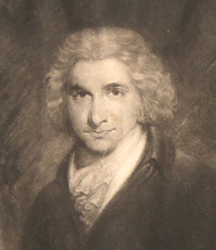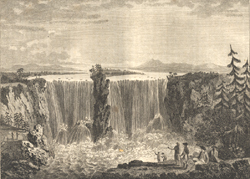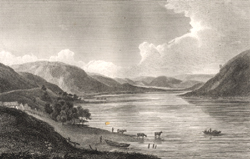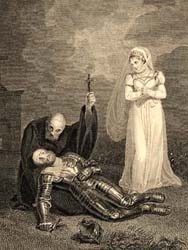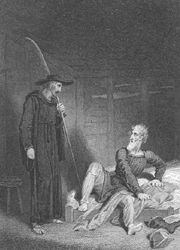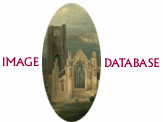|
|
Home | Corson Collection | Biography | Works | Image Collection | Recent Publications | Correspondence | Forthcoming Events | Links | E-texts | Contact James Heath (1757-1834)
In 1791 Heath was elected an Associate Engraver to the Royal Academy (one of only six posts reserved for engravers). Membership of this body permitted him regular contact with the leading artists of the day and led to further commissions. In 1794, he was appointed Historical Engraver to George III, a position he would hold under successive monarchs until his own death. He now felt emboldened to begin publishing prints and, later, illustrated books, on his own account, breaking away from the stranglehold imposed on the printing trade by dealers and publishers. If not the first engraver to follow this path, he was the first to do so with any lasting commercial success. In particular, his engraving of George Washington after Gilbert Stuart sold in unprecedented numbers on both sides of the Atlantic. Although set back by another house fire in 1797, he published his own edition of Shakespeare (1802) to rival Boydell's, preparing all the engravings himself after designs by Stothard and Henry Fuseli (1741-1825). Other projects included George Shaw's General Zoology (1800-26) and Dr Johnson's Lives of the Poets (1802-10). In 1801, Heath pioneered a further new field, producing in collaboration with the German patentee Philipp Andre the first lithographic prints to be published in Great Britain. Although this venture proved premature, Heath's later years also contained a number of commercial successes, notably plates of the Death of Lord Nelson (1811) after Benjamin West and of The Canterbury Pilgrims (1817) after Stothard (a work left unfinished at his death by Lewis Schiavonetti and completed by Heath). Latterly, though, much of his professional life was dedicated to building up a family printing business and to grooming his talented son Charles Heath to take over upon his retirement. He finally retired from business in 1822, the year that saw the publication of his edition of Hogarth's Works, for which he had re-engraved from the original worn copper-plates 116 of Hogarth's drawings. Heath died on November 15 1834. Such was Heath's prominence during his lifetime that, unusually for an engraver, numerous portraits of him exist. To see a selection on an external web-page dedicated to Heath, click here.
In 1809 he engraved one plate after Richard Westall (1765-1836) for John Sharpe's edition of Marmion, and a further plate after Westall for The Lord of the Isles in 1815. Finally, the last months of Heath's working life saw him engaged almost exclusively on Scott-related projects. From 1819-22, he produced 18 prints after Stothard, Westall, and Henry Corbould (1787-1844) for The Lady's Magazine, illustrating The Black Dwarf, The Heart of Mid-Lothian, The Bride of Lammermoor, A Legend of Montrose, Ivanhoe, The Monastery, The Abbot, Kenilworth, and The Pirate. According to John Heath, author of The Heath Family Engravers 1779-1878 and a descendant of the artist, James Heath also made 14 prints after Stothard for an 1820 Rodwell and Martin edition of Tales of My Landlord. These may well, however, be identical with some of the Lady's Magazine material.
For more engravings by Heath, search the Image Database. For further information on Heath and his family visit J.J. Heath-Caldwell's webpage. Bibliography
Last updated: 23-Nov-2004
|
|||||||||||

